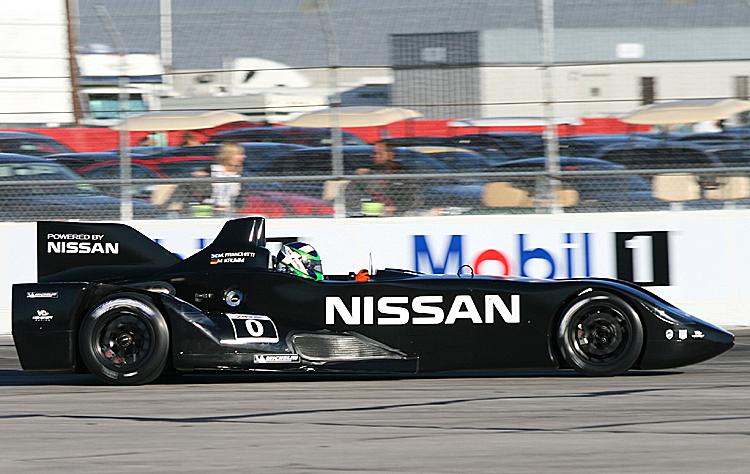After months of hype, the Nissan DeltaWing finally made a somewhat uninspiring public debut at Sebring over the 12-Hour weekend.
This bizarre, tricycle-shaped vehicle has been hotly discussed in the racing community since it was first introduced in February 2010. Looking more like a Buck-Rodgers spaceship than a racing car, the DeltaWing polarized the racing press and fanbase. Many predicted the car would fall over in a corner; many refused to accept the new design even if it worked, because it was so far from a traditional sports car.
Originally conceived as an open-wheeled single-seater meant for IndyCar, the DeltaWing project, brainchild of successful designer Ben Bowlby, was picked up by the Project 56 consortium—Duncan Dayton of the multi-champion Highcroft Racing team, legendary driver, builder, and team owner Dan Gurney of All-American Racers, and ALMS founder Dr. Don Panoz—and re-envisioned as a closed-wheel sports car suited for Le Mans-style racing.
In a major move, Nissan stepped in to supply engines and engineering support. The addition of an important auto manufacturer to the project gave the DeltaWing a lot more credibility to some, but failed to allay doubts for others.
The new car was touted as the wave of the future—a car that would use half the power and half the fuel to go as fast as current cars because it would have half the drag and weight. The DeltaWing was entered in the 2012 Le Mans 24 Hours in garage 56, which is reserved for experimental vehicles. As Project 56 press releases continued to make claims, the debate raged on.
Finally, on Until Friday, March 16, the DeltaWing proved to the public that it could go around corners. Problem is, it didn’t go fast.
For a car which has attracted as much attention as the DeltaWing, the organizers needed to make sure the debut lived up to the hype. Sadly, the car hit the track half an hour late, with no fanfare; many observers didn’t know it was coming until it had passed. The car ran two laps in the 2:30 range—45 seconds slower than the cars against which it is supposed to compete.
After so much build-up and such a let-down, one might expect fans to be bitter. This turned out not to be the case. Many were upset they missed it the first time, but fans trackside were overwhelmingly acceptant of the engineering oddity.






